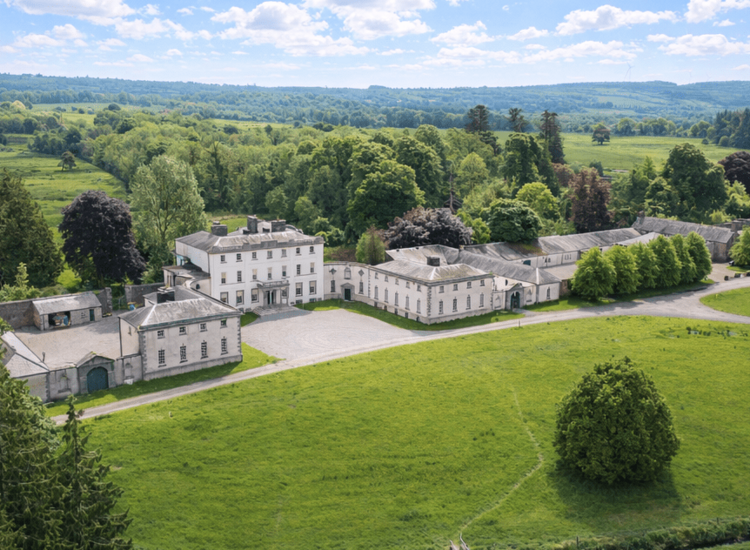Pat McCarthy's latest book published Four Courts Press contains numerous photos from the periods covered.
Page Turner / Edited by Peter McDermott
On the morning of Nov. 7, 1891, the Freeman’s Journal declared: “Mr. Redmond’s cause is dead.”
John Redmond, the leader of the Parnellites, had given up his Wexford North seat in order to contest the Cork City by-election caused by the death of leader Charles Stewart Parnell. He lost.
Then on Nov. 29, another Parnellite MP, the 40-year-old Richard Power of Waterford City, died suddenly. (It was said he’d caught a chill at Parnell’s rain-drenched Dublin funeral in October that weakened his lungs.) Redmond rejected a suggested pause in elections from prominent anti-Parnellite leader Michael Davitt and opted to fight for Power’s seat in the December by-election.
His opponents fielded none other than Davitt himself. The famous land agitator had refused all previous efforts over the years to draft him as an electoral candidate but now he felt he could possibly deal a fatal blow to the faction led by the man Parnell had called “my friend Jack Redmond.”
On paper, Davitt was the ideal candidate: he was a former Fenian prisoner and the key district of Ballybricken was long reputed to be a stronghold of radical nationalism; the city also had an emerging labor movement and Davitt was known nationally as a friend of the working man.
In his latest book about the political history of Waterford City, Pat McCarthy shows why those local forces preferred the Parnell/Redmond brand of politics and how their followers physically won the battle of the streets during that momentous electoral contest. In the end, Davitt’s backing from the Catholic clergy proved not to be the trump card it likely would have been in a more rural constituency.
McCarthy, who qualified from UCD with a doctorate in chemistry and worked in the pharmaceutical manufacturing industry, notes that the Freeman's Journal asked: “How could a gentleman such as Mr. Redmond, a land lord, associate himself with porter filled rowdies?”
“The Redmonds and Waterford: A Political Dynasty 1891-1952” reveals, though, that the city’s 170 or so pig-buyers were rather more influential than the rowdies of the street. Like in Limerick, the pig-buyers were known to pay better than the factories; they also backed the salters and curers in the bacon factories when they successfully went on strike in 1890. “This cemented the links between all involved in the bacon industry in the city except the factory owners,” the author writes.
Nationally, at the turn of the century, Redmond united his band of loyal Parnellites with the two anti-Parnellite factions and emerged as a major figure in Westminster politics. And through all the highs and lows of the struggle for Irish Home Rule, he continued to represent his bases of support in Waterford City with considerable skill.
One issue, however, that divided Waterford’s voters from Redmond was the monarchy. Back in 1897, when the House of Commons had proposed a celebratory address for Queen Victoria’s 60th year on the throne, Redmond moved an amendment noting that for Ireland those decades had seen “famine, depopulation and poverty.” His nationalist rivals in the anti-Parnellite camp led by John Dillon preferred to walk out rather than back him, claiming later that his position was not sufficiently radical enough. When he became overall leader of Irish nationalism, Redmond had to balance all of that with the reality that royal visits – like that of King Edward and Queen Alexandra to Waterford in 1904 -- were generally very popular with ordinary people.
When the leader died in early 1918, his son Captain William Archer Redmond resigned his Tyrone seat to stand in Waterford. He won, ending Sinn Féin’s winning streak in by-elections. He served in the House of Commons until 1922 and then as an independent nationalist in the Dáil from 1923. He attempted to carve out a leading role for himself by founding in 1926 the National League Party, which did well at first but he confused his supporters when he proposed anti-government alliances with both Labour and Fianna Fáil.
Captain Redmond ultimately joined the government party, Cumann na nGaedheal, before his death in 1932. His widow Bridget – a stalwart of the Blueshirts during their brief existence – won his Dáil seat in the general election of 1933 and sat as a Cumann na nGaedheal and Fine Gael deputy until her death in 1952.
[caption id="attachment_95677" align="alignnone" width="258"]
[/caption]
Pat McCarthy
Date of Birth: Feb. 10, 1947
Place of Birth: Waterford City
Spouse: Dolores
Children: Alan, Aoife
Residence: Sandymount, Dublin
Published Works: “The Irish Revolution, 1912 - 1923, Waterford” (Four Courts Press); “Waterford and the 1916 Rising” (Waterford City and County Council); “The Redmonds and Waterford. A political dynasty 1891 – 1952” (Four Courts Press).
What is your writing routine?
Mostly a few hours in the morning, a break, followed by a few hours in the afternoon,
Are there ideal conditions? Peace and quiet!
What advice do you have for aspiring writers?
Just do it. But think long and hard about your sentences - more thinking, equals less writing (and better writing), and therefore fewer drafts.
Name three books that are memorable in terms of your reading pleasure: “The Ginger Man” by J.P. Donleavy (Need I say more?); “An Beal Bocht” by Flann O’Brien (The most wonderful satire that could only have been written by someone who truly loved Irish); “The Fall of Constantinople” by Stephen Runciman (How great history can also be a great read and wonderful literature).
What book are you currently reading?
“Soldiers of Liberty” by Eva O Cathaoir - a recently published study of Fenianism, full of local detail.
Is there a book you wish you had written?
Obviously “The Ginger Man” or else John Healy's portrayal of the decline of rural Ireland – “Death of an Irish Town” - as powerful and as relevant now as it was when it was written in the 1960s.
Name a book that you were pleasantly surprised by.
Roy Foster's “Vivid Faces” - I had a huge anticipation for this book and it more than surpassed my expectations. Typical of much of what Roy Foster has written - brilliant, full of insights.
If you could meet one author, living or dead, who would it be?
Flann O’Brien, if I could catch him in a rare sober moment.
What book changed your life?
I really can't really think of one. One that opened my eyes though: Joe Lee's “Ireland 1912-1985” or David Fitzpatrick's “Politics and Irish Life.”
What is your favorite spot in Ireland?
Indreabhain, west of Spiddal, in the heart of the Gaeltacht, life slows down to a wonderful pace and time just passes by. I stay in a lovely spot, in accommodation that could be described as a B&B with a pub attached or a pub with a B&B attached. Memories obviously influenced by long summer months spent there as I have no recollection of rain, only sun.
You're Irish if…
you can accept our ways, our life, our history, our heritage. If you do not want to accept these sure you are Irish anyway.








